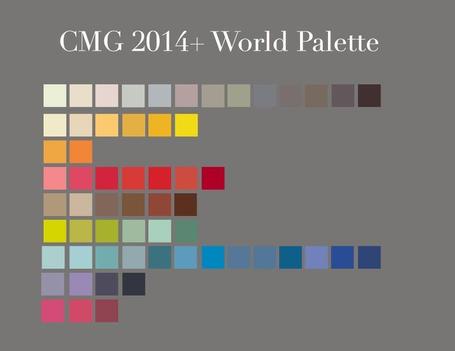Starting this project was more difficult than it appeared it would be. Thinking of ideas for designs that accurately represented the principles of design proved to be a challenge. I found that it was easier to think of one principle, pick three geometric designs, and make the design as I went. By keeping the principle I was working on in mind, I could make a design that worked well for that principle without planning it out extensively. Sometimes I started making a design for one principle, but ended up changing the principle after finishing the design. I enjoyed playing around with Photoshop to make the different designs, because I liked the different patterns and shaped I could make. To improve upon my designs, I could have used more of a variety of geometric shapes, because for the most part, I found myself using triangles, rectangles, and circles.
Balance
Variety
GEOMETRIC INSPIRATION
My geometric inspiration came from the designs I found on Noupe.com.
These designs use simple shapes and lines to draw the viewers eye along and through the design. They are simple but the use of repetition and pattern make them more interesting. The first design uses color in such a way that the eye is drawn toward the center where the warmer color are and along the grid-like lines. The second design is in a way disorienting, and it is hard to focus on one spot. I think that it is interesting how this can be achieved using very simple shapes. These designs are great examples of how the principles of design can affect how someone views a design.
PRE-ASSIGNMENT
The purpose of this assignment is to learn how to use and understand how the six principles of design work. By using geometric shapes only, we will make six designs, each of which will represent one of the six principles of design. The goal of this project is to learn the principles of design and to start to learn the basics of Photoshop. The exact project assignment is the following:
Design Assignment 1: Tell a story with geometric shapes
You will create a composition using three shapes. See samples of work at this site:
Design Project 1
Use this template for your project:
Create a 9"x9" square, under that square put three 2.5" x 2.5" inch squares. In the three squares put the three shapes you will use in the large square. In the large square you don't have to use all of the shapes if you do not want to, but you do have to use at least one of them.
You will create six of these templates -- look at the site for inspiration and we will talk about it.
Each of your six large designs must illustrate one of the six design principles: BALANCE, EMPHASIS, REPETITION, MOVEMENT, VARIETY, HARMONY.
Design Project 1
Use this template for your project:
Create a 9"x9" square, under that square put three 2.5" x 2.5" inch squares. In the three squares put the three shapes you will use in the large square. In the large square you don't have to use all of the shapes if you do not want to, but you do have to use at least one of them.
You will create six of these templates -- look at the site for inspiration and we will talk about it.
Each of your six large designs must illustrate one of the six design principles: BALANCE, EMPHASIS, REPETITION, MOVEMENT, VARIETY, HARMONY.






